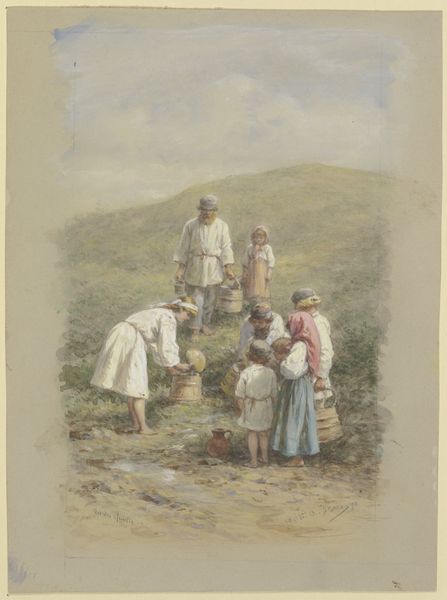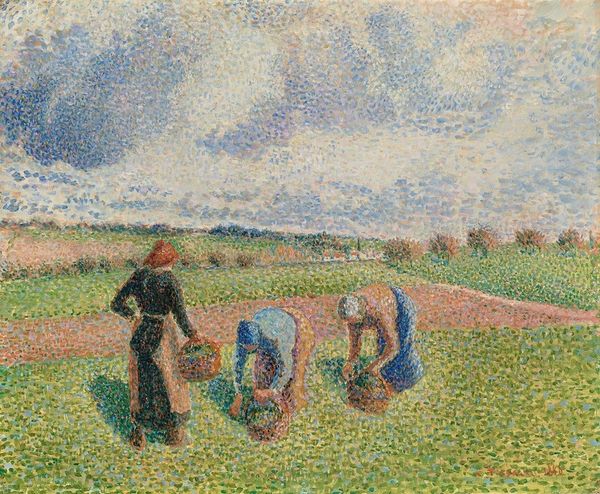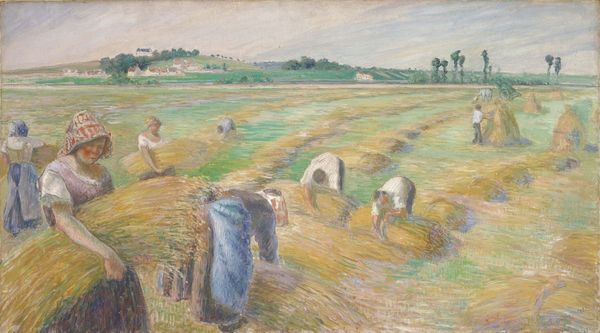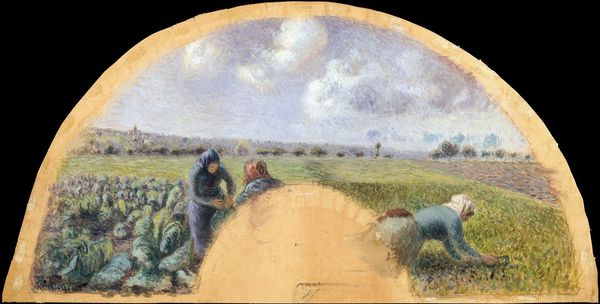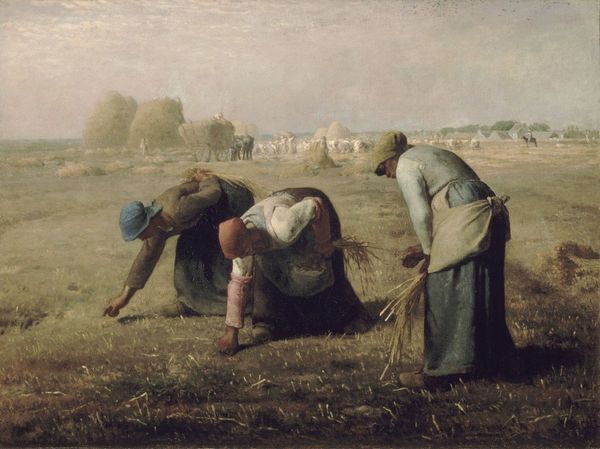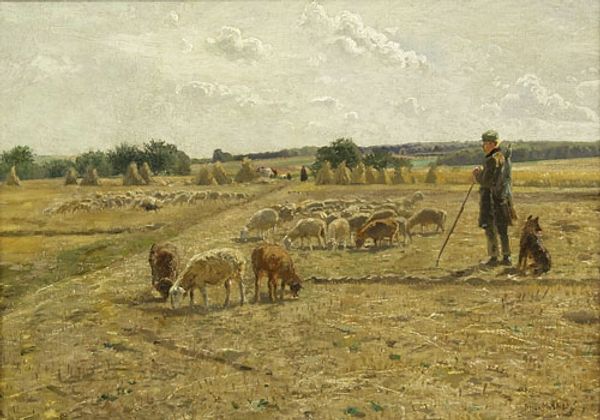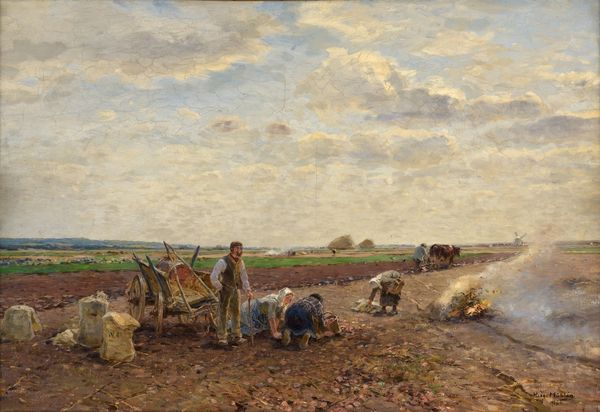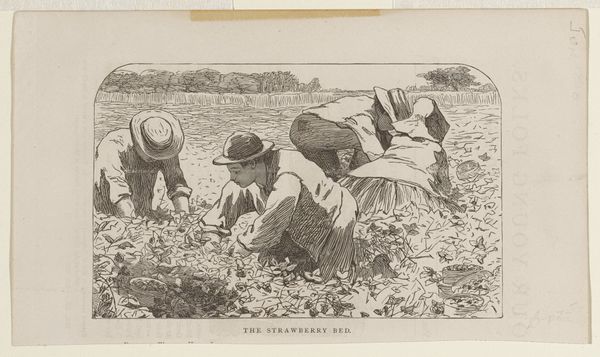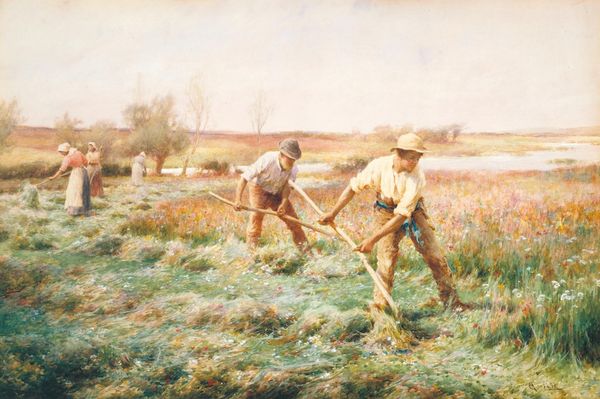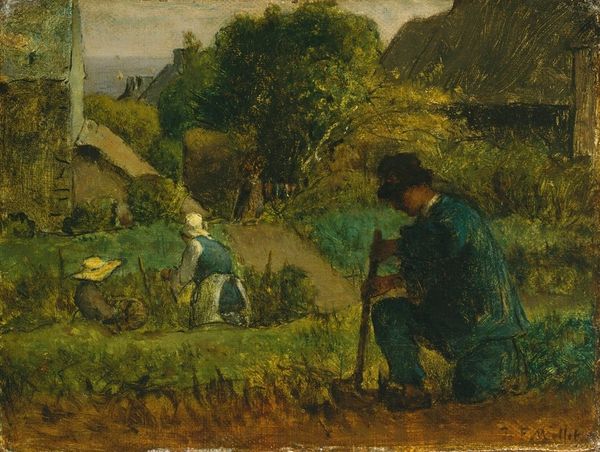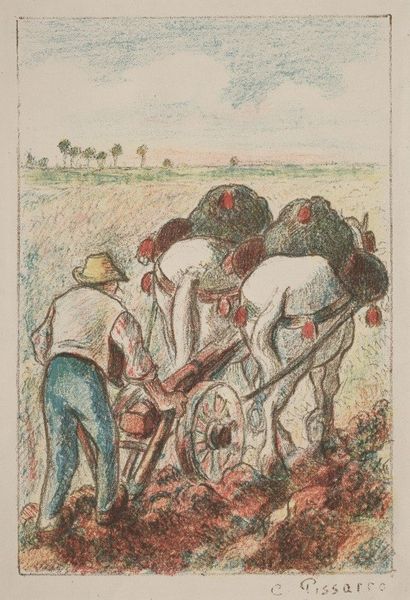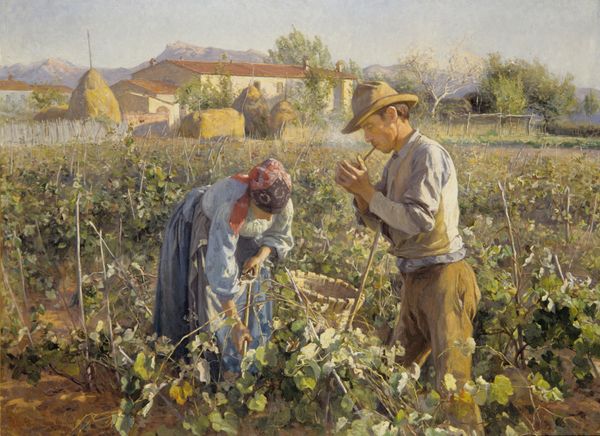
drawing, plein-air, watercolor
#
drawing
#
impressionism
#
plein-air
#
landscape
#
figuration
#
oil painting
#
watercolor
#
coloured pencil
#
watercolour illustration
#
genre-painting
#
watercolor
#
realism
Dimensions: sheet: 29.4 × 24.4 cm (11 9/16 × 9 5/8 in.)
Copyright: National Gallery of Art: CC0 1.0
Curator: Louis Welden Hawkins’ watercolour drawing, "Gleaners in the Field," dates to around 1880 and offers a glimpse into rural life of the period. What are your initial thoughts? Editor: It's quite lovely; a breezy, light-infused composition. The subdued palette creates a sense of tranquil labor under a wide, pale sky. The brushstrokes, particularly in the foreground vegetation, possess a gentle fluidity, like grass swaying in the wind. Curator: Precisely, and plein-air studies such as this offered artists a way to directly engage with modern social realities by emphasizing naturalistic depictions of the working classes within the broader culture of the time. Editor: The artist seems focused on the relationship between figures and landscape, where these bending bodies mimic the curvature of the earth. Do you find it significant that Hawkins elected watercolor for this scene of rural labor? Curator: Absolutely. Watercolour was more easily transportable, facilitating his work directly en plein air. This was critical for artists aiming to reflect not just the appearance, but the experiential reality of a specific place and time. Consider how the translucency creates an almost ethereal effect. It aligns, I believe, with an effort to dignify rural work and the people performing it, to instill respect in the increasingly urbanized audience to whom such works were addressed. Editor: The quick washes give a kind of lightness, preventing any feeling of being burdened that could accompany paintings of workers in fields. And observe Hawkins’ handling of light, it models forms while subtly dissolving contours so we are not burdened with details; and the rhythmic placement of these women establishes an undulating movement across the landscape. It’s both observational and artful. Curator: It speaks volumes about how rapidly perceptions of landscape, and the place of agricultural labor within it, were evolving, in reaction to shifts from agricultural models to industrialized production. Editor: And a fascinating reminder that the true impact of even apparently simple compositions emerges only when these formal properties combine with an informed sensitivity toward the period’s complex, underlying politics.
Comments
No comments
Be the first to comment and join the conversation on the ultimate creative platform.
